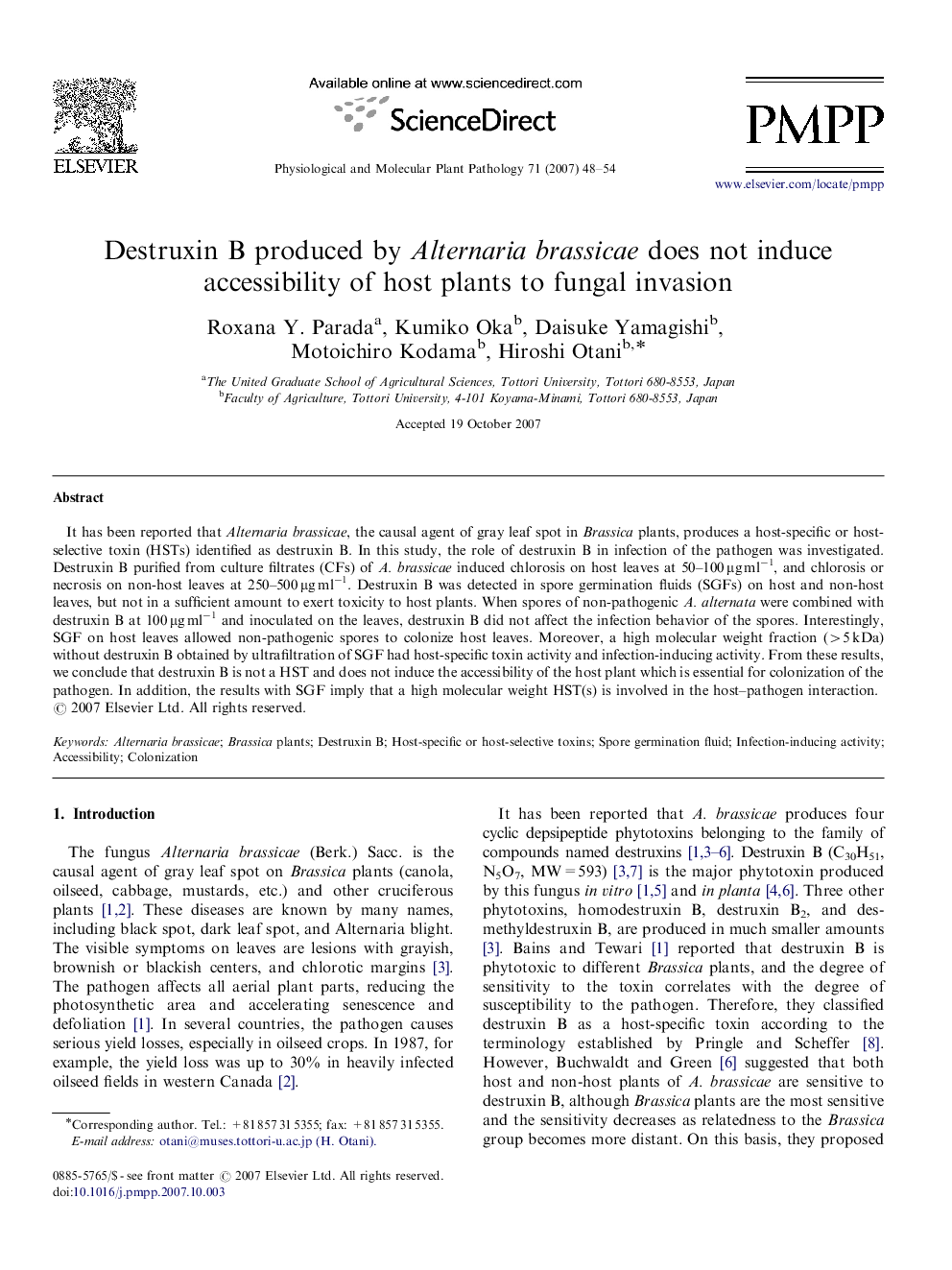| Article ID | Journal | Published Year | Pages | File Type |
|---|---|---|---|---|
| 2836713 | Physiological and Molecular Plant Pathology | 2007 | 7 Pages |
It has been reported that Alternaria brassicae, the causal agent of gray leaf spot in Brassica plants, produces a host-specific or host-selective toxin (HSTs) identified as destruxin B. In this study, the role of destruxin B in infection of the pathogen was investigated. Destruxin B purified from culture filtrates (CFs) of A. brassicae induced chlorosis on host leaves at 50–100 μg ml−1, and chlorosis or necrosis on non-host leaves at 250–500 μg ml−1. Destruxin B was detected in spore germination fluids (SGFs) on host and non-host leaves, but not in a sufficient amount to exert toxicity to host plants. When spores of non-pathogenic A. alternata were combined with destruxin B at 100 μg ml−1 and inoculated on the leaves, destruxin B did not affect the infection behavior of the spores. Interestingly, SGF on host leaves allowed non-pathogenic spores to colonize host leaves. Moreover, a high molecular weight fraction (>5 kDa) without destruxin B obtained by ultrafiltration of SGF had host-specific toxin activity and infection-inducing activity. From these results, we conclude that destruxin B is not a HST and does not induce the accessibility of the host plant which is essential for colonization of the pathogen. In addition, the results with SGF imply that a high molecular weight HST(s) is involved in the host–pathogen interaction.
